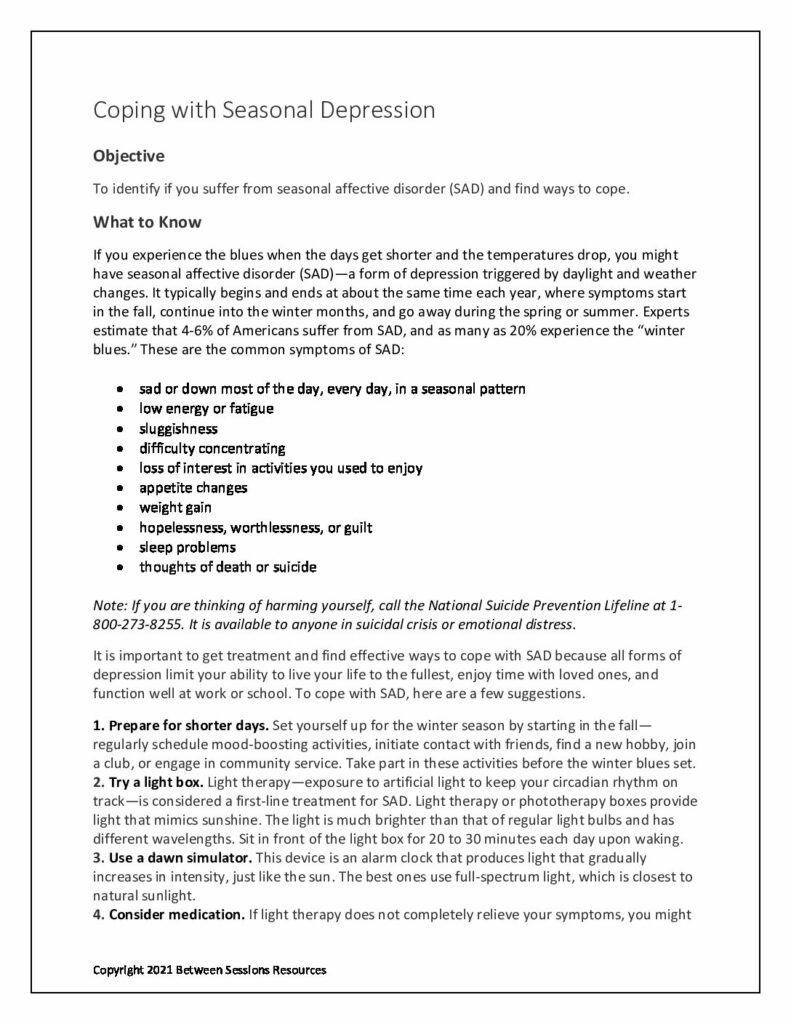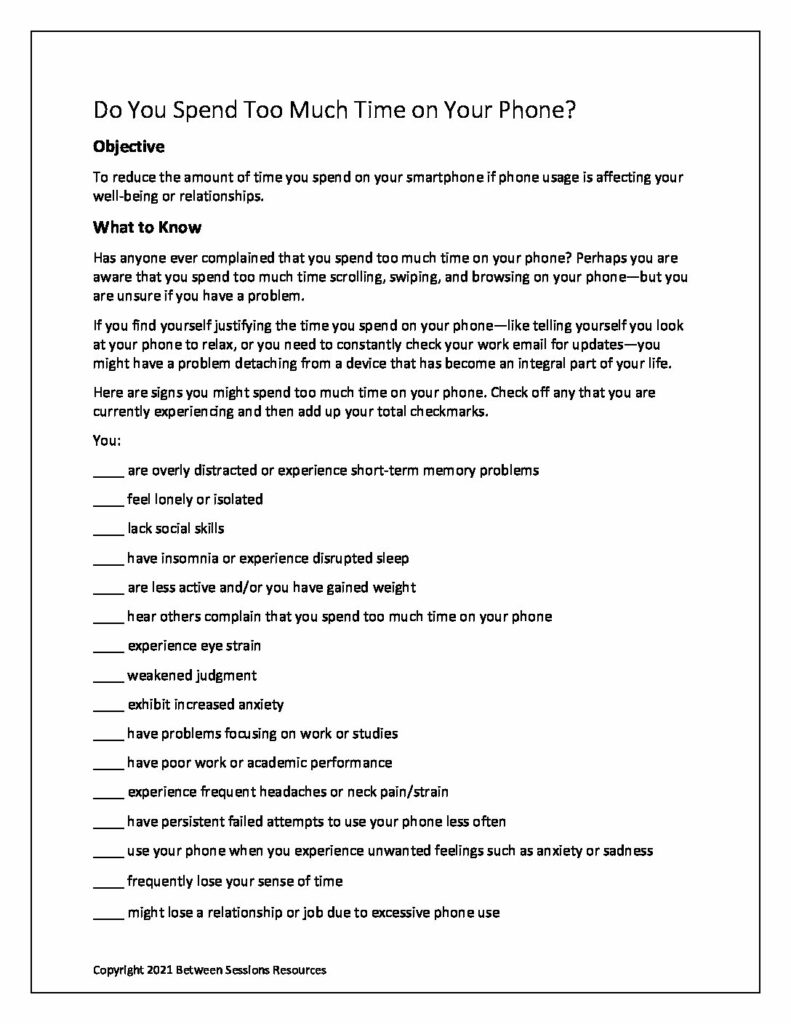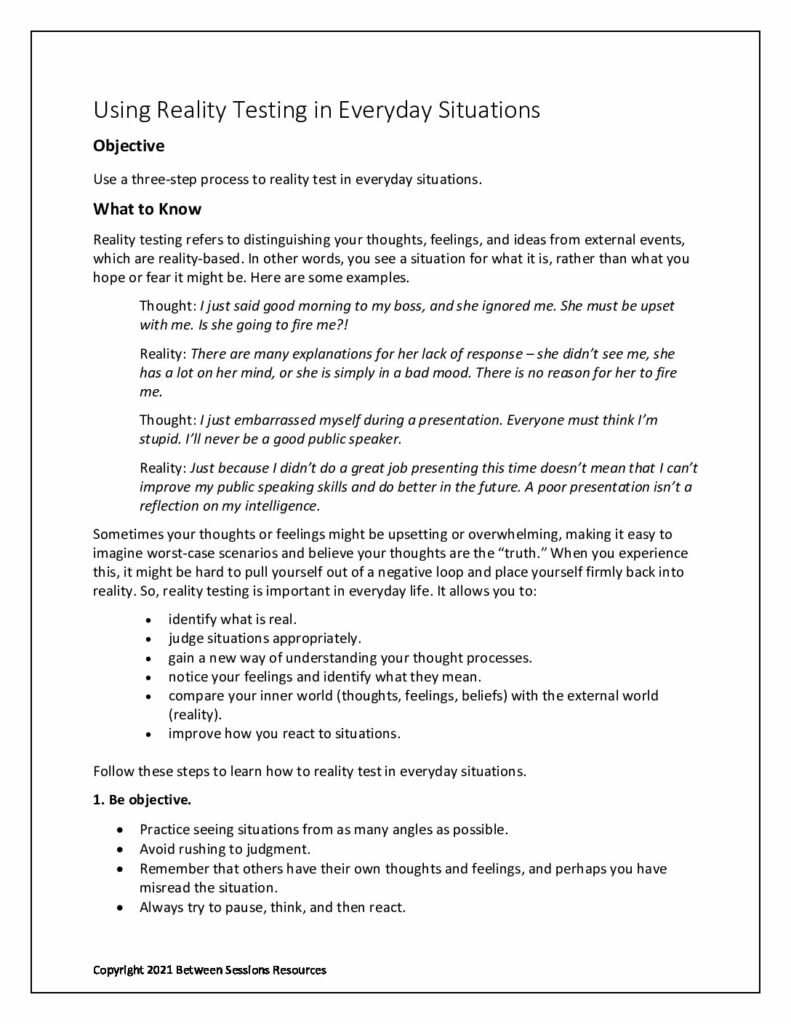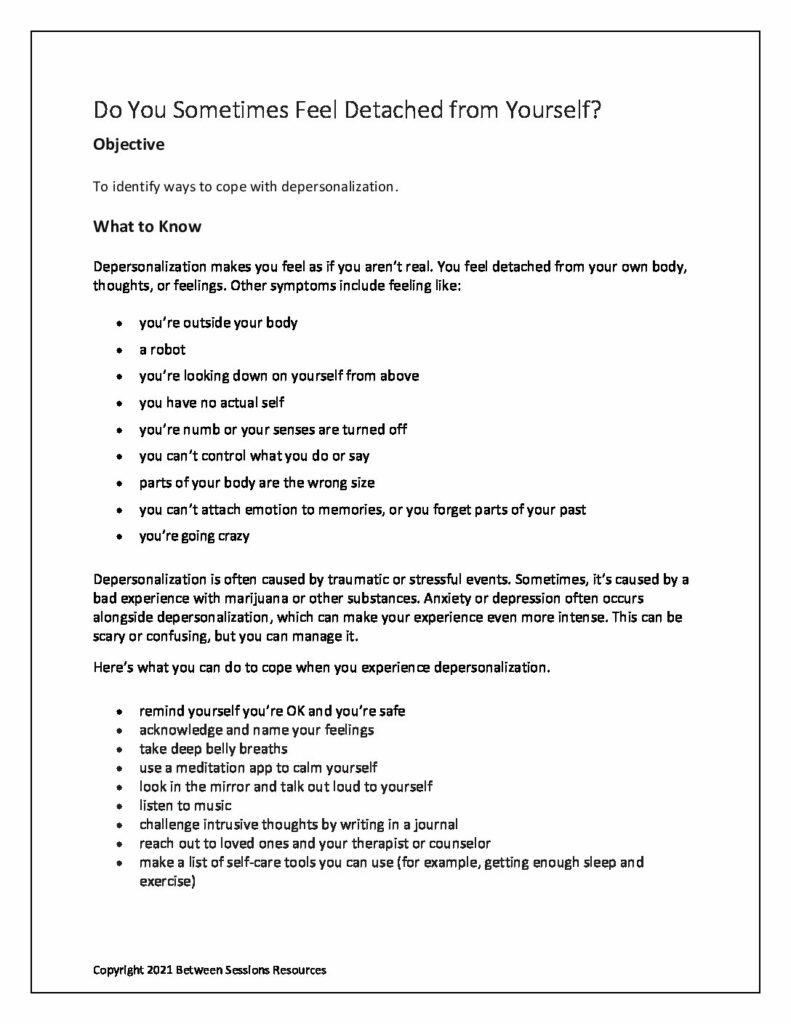This worksheet contains 27 statements for clients to rate from “never” to “frequently.” The third page of the form is for therapists to enter the scores and determine if there is impairment in any of 9 areas (working memory, time management, emotional regulation, planning, and so on)
This worksheet helps people deal with Seasonal Affective Disorder (SAD) and suggests 12 ways for people to cope with this common winter problem. It includes a chart for people to keep track of what helps and what doesn’t. (1221, depression, SAD, holidays)
This worksheet describes the “symptoms” of phone addiction. It provides a checklist of behaviors that might indicate a problem. It also eight suggests on how to become less dependent on a phone if it is interfering with other aspects of your life. A chart is provided to help people develop a plan to decrease their phone dependence. (1221, phone addiction, addiction, relationships)
Clients learn to re-orient their thinking. (1121, problem-solving, solutions, depression, anxiety)
This worksheet teaches a 3-step process to help people judge situations appropriately, gain insight into their thought processes, compare their inner world to the external world, and more. It is designed to help people be objective, seek the perspective of others, and pay attention to reactions. (1121. Borderline Personality Disorder, Bipolar Disorder, anxiety disorders, awareness)
This worksheet is designed to help people cope with depersonalization, when a person has an experience of feeling detached from his/her own body, thoughts, or feelings. The worksheet presents a variety of techniques to cope with this feeling and a chart to keep track of whether these techniques are successful. (1121, depersonalization, PTSD, Borderline Personality Disorder, psychosis, psychotic)






